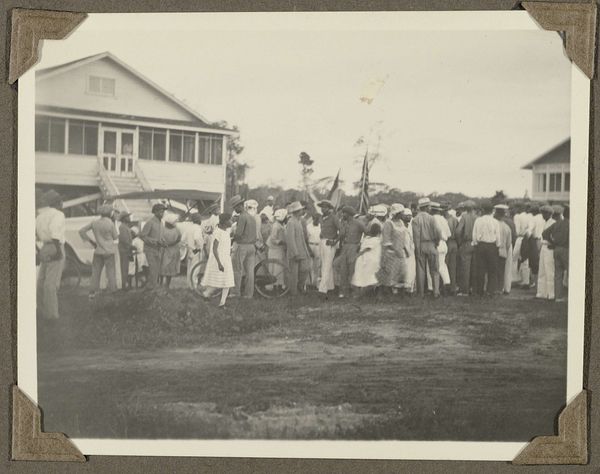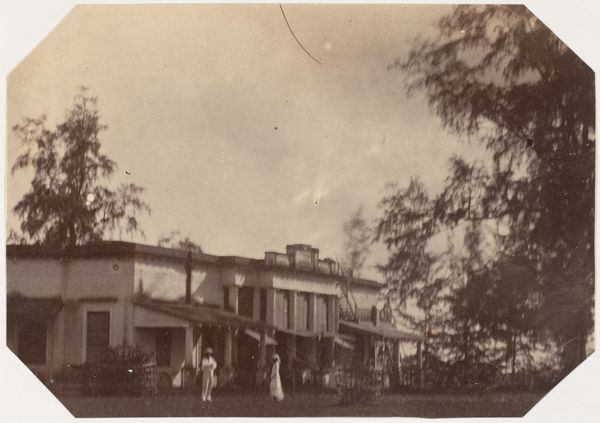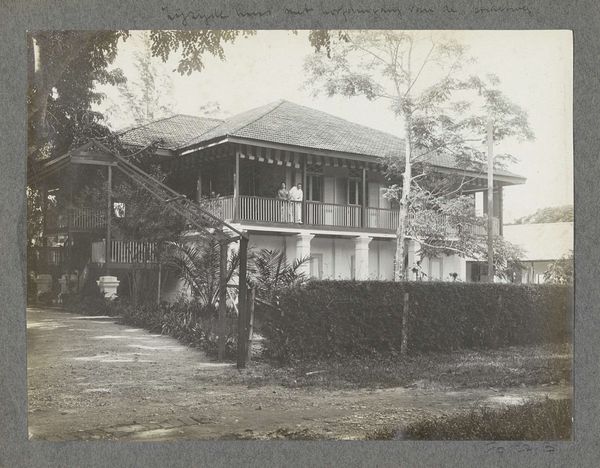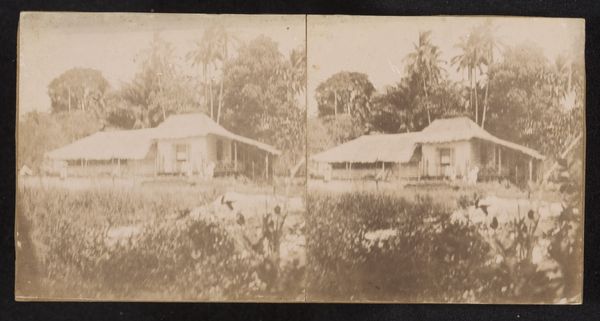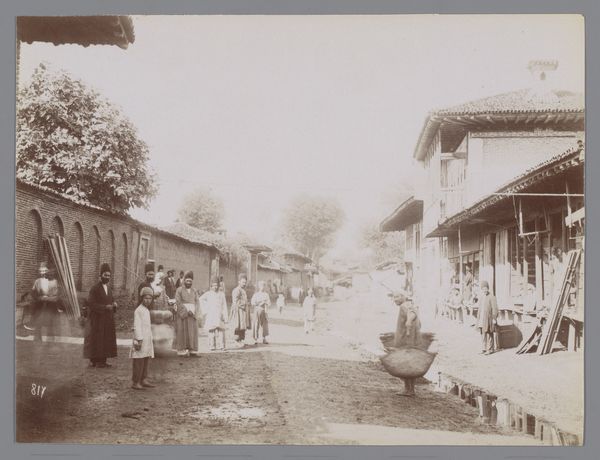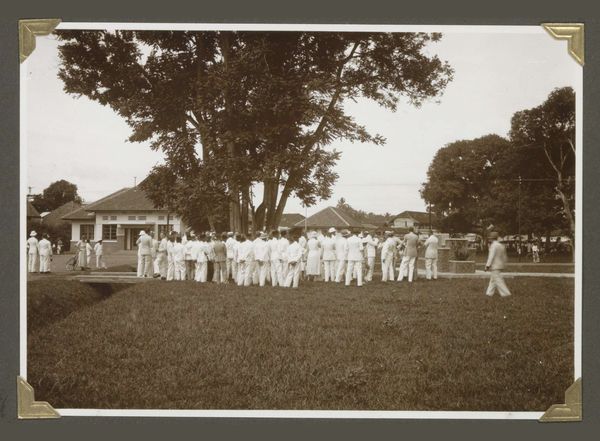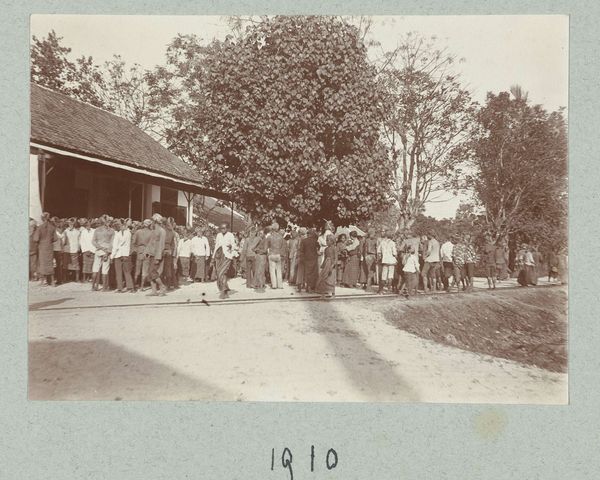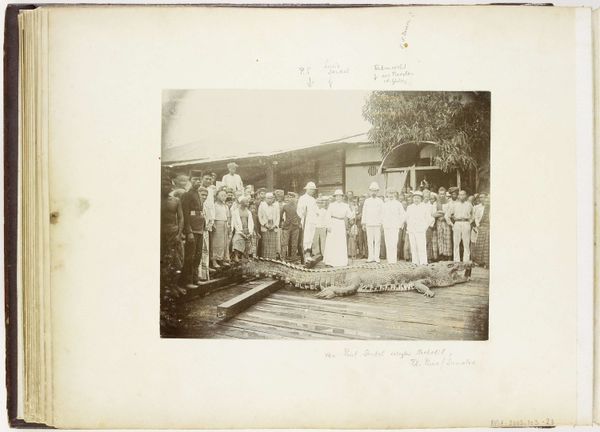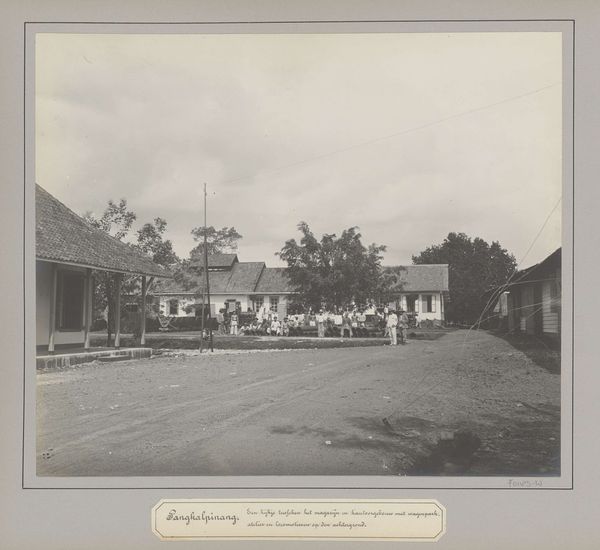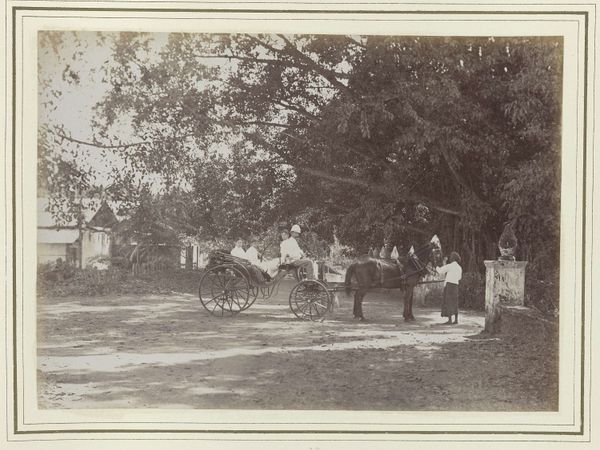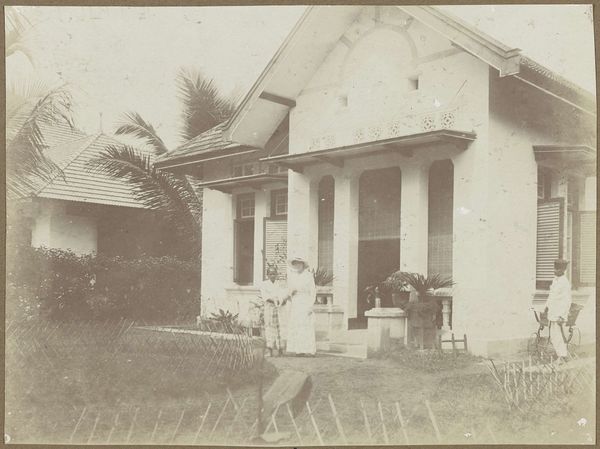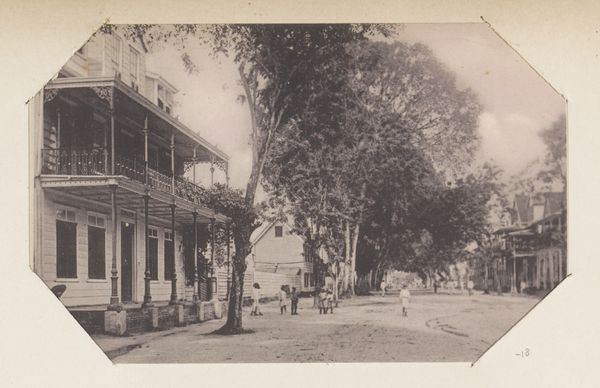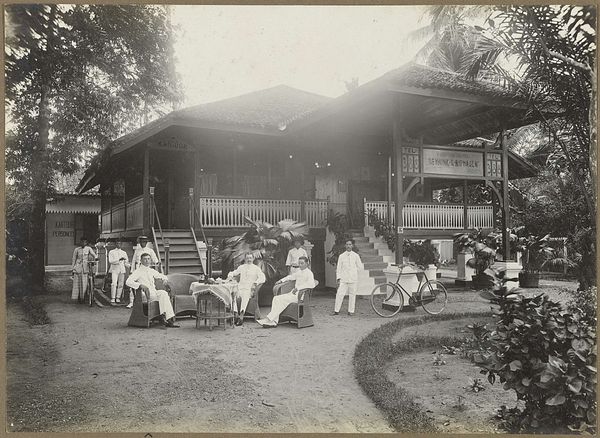
photography, gelatin-silver-print
#
landscape
#
archive photography
#
photography
#
historical photography
#
gelatin-silver-print
Dimensions: height 120 mm, width 173 mm
Copyright: Rijks Museum: Open Domain
Curator: Oh, I find myself strangely moved by this anonymous gelatin silver print, titled "Op de tennisbaan," likely captured sometime between 1910 and 1914. It's ghostly, isn't it? A frozen moment of leisure. Editor: It looks almost colonial in its rigid, hierarchical composition—the weatherboard buildings, the carefully positioned figures in white. I'm immediately thinking about the exploitation inherent in the production of the silver used in this print, extracted from the earth for such "refined" pastimes. Curator: True, there's a formality here. The subjects, though arranged, seem caught in their own worlds, as if time stilled just for the camera. But look at the light! It renders the scene dreamlike, a world seen through memory, perhaps? I imagine stories bubbling under the surface, unspoken desires lingering on the humid air... Editor: I wonder about the labor behind that idyllic scene. Who built those structures, served the tea, maintained the courts? These details of class and consumption, usually hidden from plain view in these photographs, are far more important than whatever leisurely events are transpiring. Consider the environmental degradation involved in producing the photographic materials; leisure never comes without material consequences. Curator: It's a sobering thought. Yet, I can't help but appreciate the beauty that emerges from this "refined" pastime, however fraught it may be. Look at the way the lines of the stairs and the buildings lead your eye, and the textures rendered by light are subtle! What sort of narrative exists within the people's bodies and dress! How many such moments have disappeared? Editor: Agreed, even within the colonial setting. This sort of photo can reveal the cracks, the hidden relationships of exploitation masked by polite society, like examining the chain of events that have created, shipped, sold, bought and left this little piece of paper in a larger world. Curator: A poignant reminder that beauty and history are inevitably intertwined. Editor: Ultimately, it pushes us to confront uncomfortable truths about progress and privilege through the art's form, medium, and historical context.
Comments
No comments
Be the first to comment and join the conversation on the ultimate creative platform.
